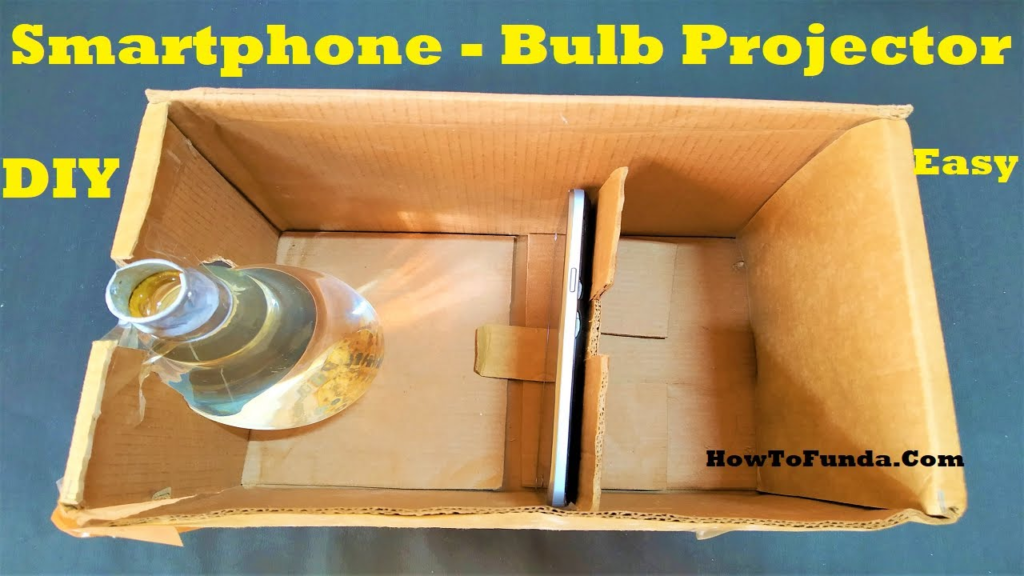
1. Question: What is the basic principle behind the working of this cardboard projector model?
Answer: The cardboard projector model works on the principle of light projection. It utilizes a light source (bulb) to project an image or content placed on a transparent surface onto a larger screen.
2. Question: How does the bulb contribute to the projection process?
Answer: The bulb emits light, and this light passes through a transparent image or content, creating a shadow that is enlarged and projected onto a screen.
3. Question: Why use cardboard for the projector model?
Answer: Cardboard is a readily available and easy-to-handle material. It is used to create the structure of the projector and as a surface to display transparent images.
4. Question: Can this cardboard projector model be used for educational purposes?
Answer: Yes, it can be used for educational purposes, providing an interactive and cost-effective way to project simple images for learning.
5. Question: What is the role of the transparent surface in the model?
Answer: The transparent surface, often a sheet or acetate, serves as the canvas for displaying images. It allows light to pass through and project the image onto the screen.
6. Question: Can the size of the projected image be adjusted?
Answer: The size of the projected image can be adjusted by changing the distance between the bulb and the transparent surface.
7. Question: How is the focus of the projector adjusted?
Answer: Adjusting the distance between the bulb and the transparent surface helps in achieving focus. Moving the projector closer or farther from the screen alters the image size and sharpness.
8. Question: Is this projector model suitable for displaying text?
Answer: Yes, the model can display simple text, images, or drawings, making it suitable for basic educational presentations.
9. Question: What are the limitations of this cardboard projector model?
Answer: The model is best suited for simple images and text. It may not provide high-resolution or intricate projections.
10. Question: How is the cardboard projector powered?
The bulb in the cardboard projector is typically powered by a simple electrical circuit connected to a power source.
11. Question: Can this model be used in areas with limited access to electricity?
Answer: Yes, it can be adapted to work with battery-powered or low-power LED bulbs, making it suitable for areas with limited access to electricity.
12. Question: How can different colors be displayed using this projector model?
Answer: Using colored transparent sheets or markers on the transparent surface allows for the projection of various colors.
13. Question: Can the cardboard projector model be used in daylight?
Answer: The model works best in low-light conditions. Daylight may affect the visibility of the projected image.
14. Question: What are the advantages of using cardboard in this model?
Answer: Cardboard is lightweight, readily available, and easy to cut and shape, making it an ideal material for creating a simple and portable projector model.
15. Question: How is the image inverted when projected?
Answer: The image is naturally inverted in the cardboard projector model due to the path of light passing through the transparent surface.
16. Question: Is the model suitable for outdoor use?
Answer: While it can be used outdoors, the model’s effectiveness may be limited by ambient light. It is best suited for indoor use or low-light environments.
17. Question: Can the cardboard projector be used for entertainment purposes?
Answer: While it may not match the quality of commercial projectors, the model can be used for simple entertainment, such as displaying images or videos in a home setting.
18. Question: How does the transparency of the images affect the projection?
Answer: Transparent images allow more light to pass through, creating clearer and more vibrant projections.
19. Question: What is the lifespan of the bulb used in the model?
Answer: The lifespan depends on the type of bulb used. LED bulbs, for example, have a longer lifespan compared to traditional incandescent bulbs.
20. Question: Can the model be used for larger audiences?
Answer: The model is suitable for small audiences in a classroom or home setting. For larger audiences, a more powerful projector may be necessary.
21. Question: How is the transparency of the images achieved?
Answer: Images can be printed on transparent sheets or drawn with transparent markers on a clear surface.
22. Question: Does the model require frequent maintenance?
Answer: The model may require occasional adjustments for focus and image positioning, but maintenance is generally minimal.
23. Question: Can the model be customized for different projection angles?
Answer: Yes, the model can be adjusted to project images at different angles by tilting or positioning the projector accordingly.
24. Question: Are there safety considerations when using the cardboard projector model?
Answer: It is essential to use low-power bulbs to prevent overheating. Ensure proper ventilation and avoid leaving the model unattended while in use.
25. Question: How can this model contribute to STEM education?
Answer: The cardboard projector model provides an engaging and hands-on way to introduce basic principles of optics, light, and projection, making it a valuable tool for STEM education.

